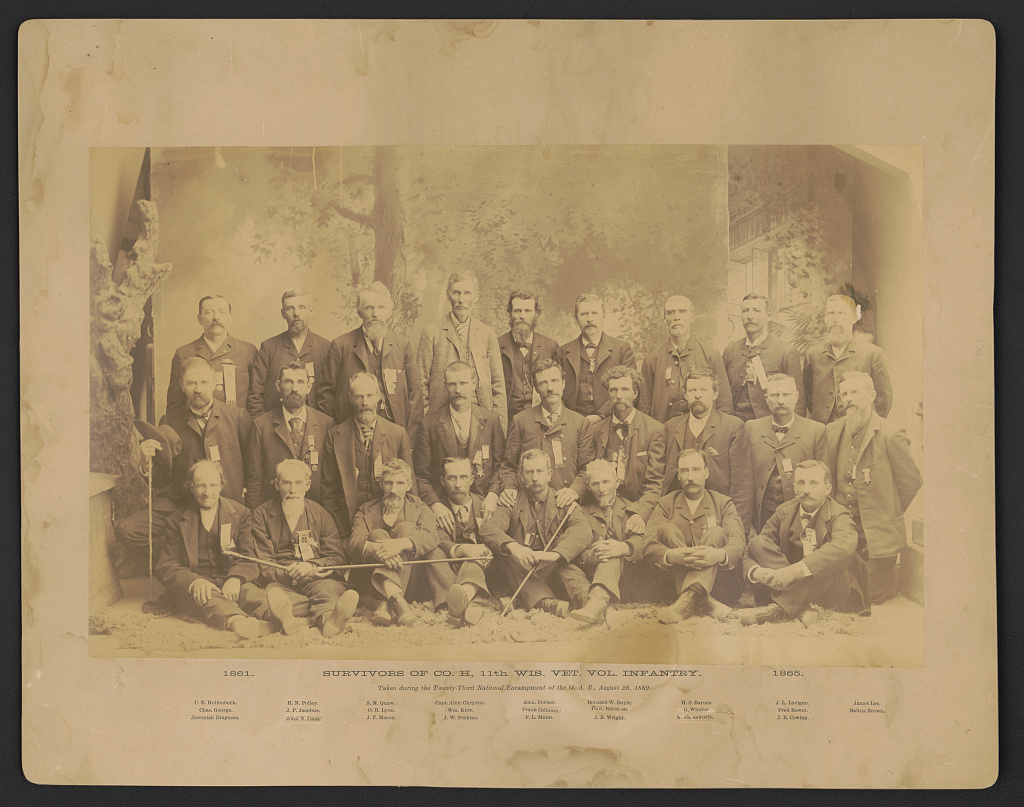

In 1868, the removal of soldiers’ remains from temporary graves all over the city began, when a national cemetery was established in Fredericksburg. Eventually, more than a hundred bodies and at least one horse were buried on Kenmore’s grounds, mostly in hastily dug shallow graves.

War era graffiti left on the rafters of the attic attest to the fact that wounded soldiers were crammed into every available space in the house. It has long been believed that Kenmore’s glorious dining room was used as the surgery, as evidenced by the fact that all of its original floorboards had to be ripped up and replaced after the war. The fact that a man in such a condition did not rate top billing for treatment perhaps speaks to the situation of the other soldiers being brought into Kenmore by the hundreds every day. Although he describes a serious leg wound that was obviously infected, he was given no medical treatment other than doses of opium and liquor. Rood would stay at Kenmore, in increasingly dire circumstances, from May 14th through the 17th. The second floor landing where Rood was given medical treatment. He describes the scene upon his arrival, “…took me out of the rig and had me carried into Kenmore house and (no room on the ground floor so they toted me up one flight and laid my cot down on the floor by the bannister or balustrade) so I could see people (Drs & c.) coming up and going down…Surgeons noticed me…They gave me grog…and put me to sleep with opium pills.” Rood writes, “…where to put the thousands who were being brot in! City already full: every house, barn, shop, factory, shed: all overcrowded and thousands laying on the sidewalks and gardens and fields!” Rood was in a wagon which had been left on a crowded street in the city, but a chaplain who he knew happened by and helped him find shelter at Kenmore. The city was soon overwhelmed with soldiers in dire circumstances, needing far more medical attention and resources than were available.Ī memoir of experiences during the war written by Amos Rood, an officer in the 7th Wisconsin Infantry who was wounded at Spotsylvania, gives a vivid account of the situation in Fredericksburg and at Kenmore specifically (a transcription of the memoir is in the Kenmore manuscript collection). The wounded from these battles were evacuated from the front lines to Fredericksburg. In May of 1864, Union and Confederate forces clashed at The Wilderness just west of Fredericksburg, with further hostilities throughout the month at nearby Spotsylvania Courthouse. While that battle was intense and destructive, the true lasting effects of the war on Kenmore came later, when the house was used as a Union field hospital during the early stages of the Overland Campaign. At least 11 cannon balls hit the house, with at least one penetrating the interior, damaging the famous plasterwork ceiling in the Drawing Room. Visitors to Kenmore have long heard that the house survived bombardment during the Battle of Fredericksburg in December, 1862. Although Kenmore is best known as a house of the colonial period, it had quite a history during the Civil War. An enslaved woman can be seen standing at the corner of the kitchen while an enslaved man is visible under the tree at the far left.Īs the sesquicentennial of the Civil War draws to a close, we are remembering the war at Kenmore, and its aftermath. The wooden structure to the mansion’s left is the kitchen, which would be destroyed during the Battle of Fredericksburg. Historic Kenmore sometime before the end of 1862.


 0 kommentar(er)
0 kommentar(er)
